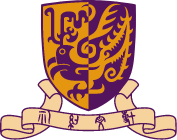瀛寰互繫:地球系統科學課程
The Correlated Dynamics: Earth System Science Programme
理學院於2012年開辦地球系統科學課程,提供數理分析、研究訓練、野外考察和實習經歷,讓學生全面認識地球系統,深入研究切身的議題,比如自然災害、氣候變化、生態健康、能源問題及可持續發展等。
葉燕盈是地球系統科學課程的首屆學生,也是課程標誌的設計者。她解釋,課程聚焦於系統性及跨學科的地球研究,以助學生從大氣、地質、水和生物等不同圈層了解地球的運作原理,故此,她用白線勾畫出白雲、地殼、波浪和綠葉的輪廓,着以天藍、土楮、海藍和葉綠色,將四瓣圖案拼合為一圓形,緊貼並存,寓意地球系統的各個圈層環環緊扣,互為影響。
課程的標誌採旋轉型設計,這設計巧妙地產生互動感,乍看之下如同四瓣圖案在旋轉着,貌似轉動中的地球,而這自然的動感一如課程內緊密的師生互動。葉同學萌生設計課程標誌的念頭,老師和行政人員都十分支持,她於是把地球系統中的其中四個主要圈層融入設計初稿。「我的初稿像素描似的,戴沛權教授建議我改用簡潔、自然的線條;起初我以幾座山代表岩石圈,後來張健博士提議我改用一塊具有『轉換斷層』結構的地殼。沒有他們的意見,就沒有現在這個精美而簡約的標誌。」
在美學領域,圓形和球形是完美的幾何圖形,而公元前五百年的古希臘人畢達哥拉斯早認為地球和天體都是球形的,他認為一切立體圖形中最美的是球形,平面圖形中最美的是圓形。中國自古以來亦以圓為美,「圓」是圓融,是追求和諧的處世之道。地球系統科學課程的圓形標誌,豈非承載一種人與自然和諧共處之意?
The Earth System Science Programme was launched by the Faculty of Science in 2012. Equipped with training in quantitative analysis, research methodologies, fieldtrip and internship experiences, its students would be able to deepen their understanding of the Earth system and delve into crucial issues such as natural hazards, climate change ecological health, energy resources and sustainability.
Miss Yvonne Ip from the first cohort of the programme is the designer of its logo. She explained that the curriculum focuses on systemic and interdisciplinary research of the Earth, which helps students understand its operation from spheres such as the atmosphere, the geosphere, the hydrosphere, and the biosphere. Accordingly, she outlined a cloud, the Earth’s crust, water and a leaf in white strokes, and coloured them in sky blue, ochre brown, ocean blue and green, respectively. As the four constituents are entwined into a circle, the interrelatedness and mutual influence of these spheres of the Earth system are vividly demonstrated.
The dynamic rotary logo design gives a touch of interactiveness. Its four constituents seem to be rotating at a glance, like the Earth in rotation. Such a natural dynamics echoes how everyone in the programme works together. When Yvonne began to design the logo for the programme, she received the full support from the faculty and administrative staff. She included the four cornerstone spheres of the curriculum in the first draft for their review. ‘My first draft was like a sketch, so Prof. Amos Tai suggested that I should use plain and natural strokes; Dr. Jason Zhang also advised me to characterize the Earth’s crust with “transform faults” instead of the clichéd mountain tops. Without their advice, we wouldn’t have a logo that captures our mission so sophisticatedly and so simplistically!’
Circles and spheres are perfect geometrical shapes. As early as 500 B.C., Pythagoras had already proposed a spherical Earth and other spherical celestial bodies. Like many Greeks, he believed the sphere and the circle were the most perfect forms. The ancient Chinese also equated circles with beauty. Rotundity implies ‘harmony’ in Chinese culture, which is the way of life commonly pursued. The round logo of the Earth System Science Programm imparts a sense of harmony of Man and Nature, doesn’t it?




